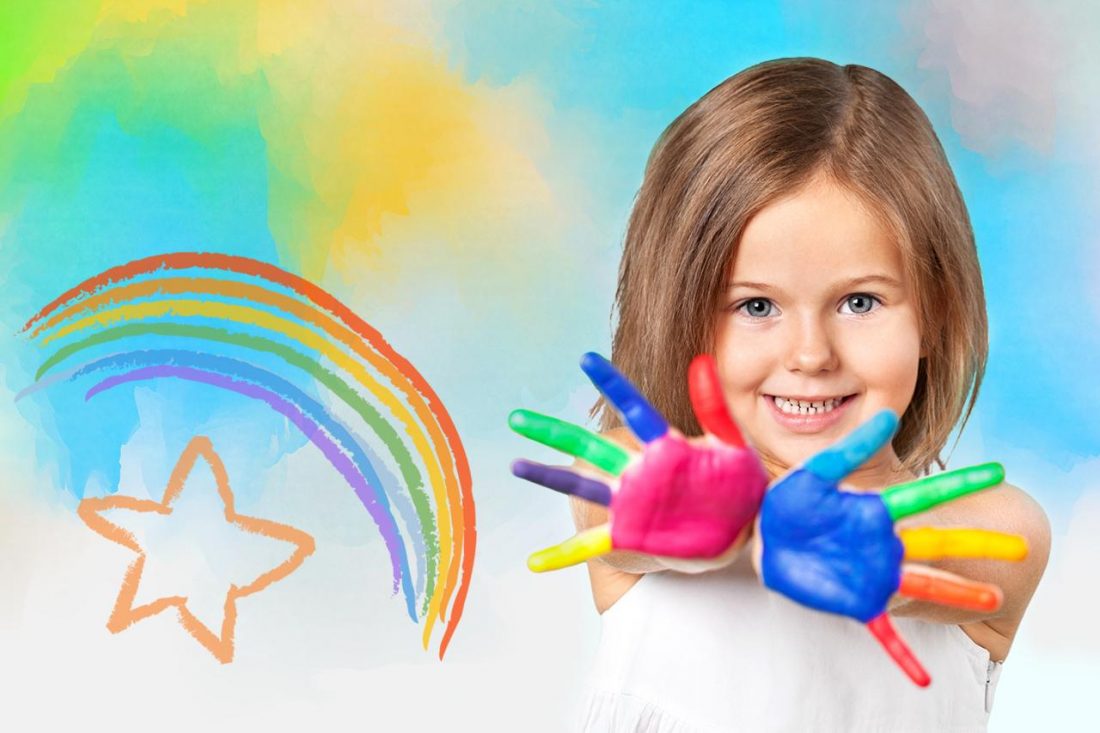For some mothers and teachers, art therapy is still a little-known area that you have barely heard of and hardly trust. But maybe someone knows about art therapy, its methods and features, and perhaps you are captured by the spontaneous, creative, joyful spirit of this kind of creativity.

Of course, in addition to amazing drawing ideas and a spirit of creativity, this method has a lot of advantages. Before starting the lesson, there are several important points to consider:
1. When working with children, remember that their hands are not yet sufficiently developed, they are clumsy and awkward. Children still do not know how to regulate the strength, accuracy, direction of their movements. Often the absence or lack of development of these skills makes a child angry and upset. Prompt and tell a kid how to perform a certain action correctly, but in no case criticize the child’s ineptitude.
2. If a child is prone to aggression, then in working with him or her you should prefer clay crafting or rock painting. The drawing will only annoy a child who is not able to control one’s mood swings yet, but clay crafting or processing stones, on the contrary, will calm a child down.
3. Always have the widest selection of color palettes: pencils, paints, or markers. However, paint is preferable, because a brush is more flexible and free. The pressure and the severity of the line that a pencil requires are less conducive to liberation, especially at first.
Therapeutic and pedagogical effect of art therapy
Why is art therapy the right choice for working with a child of any age?
Art therapy is a unique technique that simultaneously implements a complex of therapeutic and pedagogical means:
• helps to develop the emotional sphere of a child, strengthening his or her trust in the world;
• develops a kid’s sensory abilities (sensations, perception, intelligence), fine motor skills, speech, imagination, creativity; enriches the child’s social experience, develops the child’s communication skills;
• helps easier to live through the period of adaptation and relieves negative stress conditions (anger, anxiety, resentment, sudden departure of the mother for a certain period of time, etc.);
• art therapy helps to learn about the world, explore it, develop experience and experimental activities;
• as a complex system, art therapy helps to develop a harmonious, spiritually developed personality and instill an aesthetic taste;
• to identify gaps and shortcomings in the development and upbringing of the child, his or her experiences and states, relations with the world.
Quite often, after the completion of art therapy sessions, people are fond of the types, techniques and methods of creative activity that they got acquainted with in the classroom.
When, in anticipation of the New Year, you decide to make a cute diy christmas painting with your child, remember that each drawing is unique. It cannot be accurately reproduced in the following lessons.
Each new job is a natural way for a child to tell about oneself, about one’s feelings and thoughts at the current moment in time; as well as about their experience and feelings, which did not find verbal expressions and became an emotional burden for a person.
Everything that worries a child, he or she can express on paper or other specially selected material for this. The whole process of creative activity is an important element of the child’s development.
During the classes, their creativity opens up, which children and adolescents previously did not suspect. Children do not think about the end result, they enjoy the process itself, learn to express their feelings, cope with experiences, give an opportunity to release their accumulated energy, and also develop creative abilities. That is why art therapy is so effective when working with children of all ages.
If you are a barista and want to expand your skills you can take latte art classes melbourne to learn the best techniques and get a step ahead in your field.



